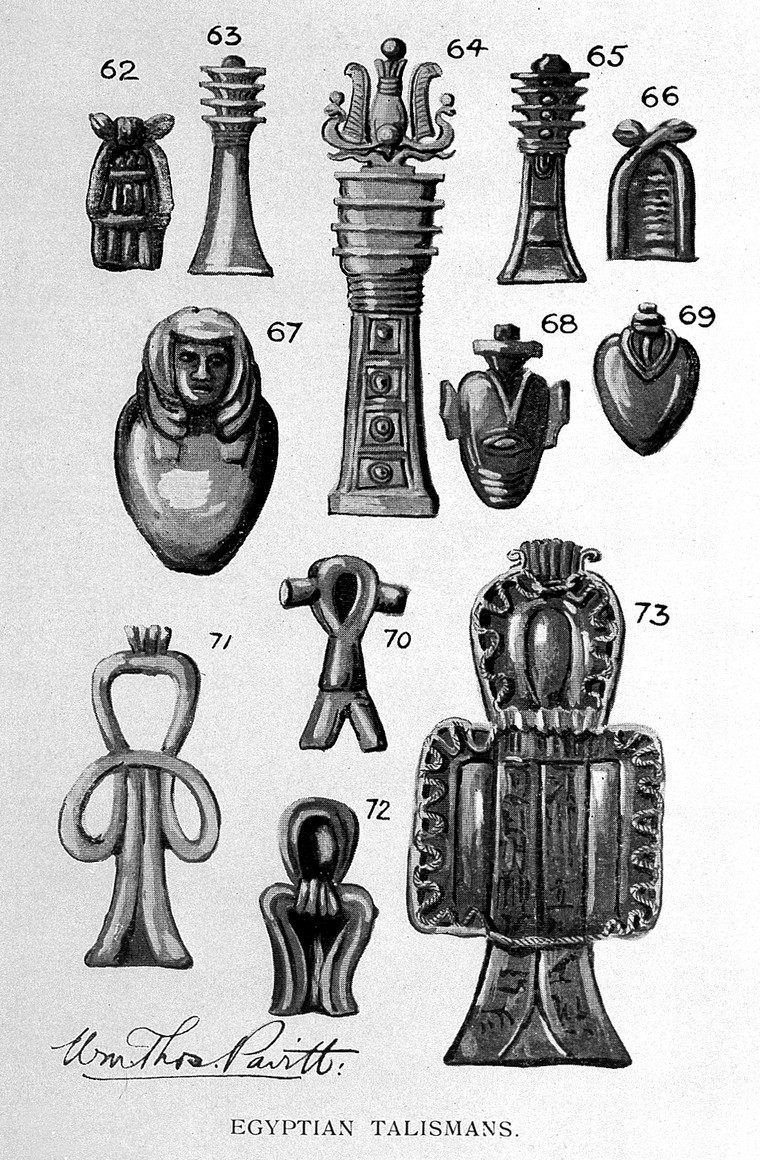
Egyptian talismans. Credit: Wellcome Collection. CC BY
A talisman can be described as an emblematic object or image, accredited with magical powers, through which his possessor can summon supernatural beings’ and protect himself from evil or harm.
It is often a precious stone, sometimes a piece of metal or parchment on which a celestial symbol is etched, such as the depiction of a planet or a sign of a zodiac or the picture of an animal or a monster. However, mystic words and occult phrases are often replaced by such devices.
Talismans must be prepared by the person who plans to use it under suitable astrological conditions and planetary influences for them to have any value.
They used to be worn as amulets on the body, either as prophylactics or as agents of healing.
Tradition assigns its creation to the Persian philosopher Zoroaster, but its use was likely coeval with the earliest civilizations.
Talismans were made of various metals and their mystical virtues varied in their shapes and symbols. Silver moon-shaped talismans, for instance, were extremely fashionable and they were also thought to insure travelers against mishaps.
Talismans were previously split into three groups, astronomical, magical and blended.
The first name generally consisted of a magical figure, cut or etched under certain superstitious observances.
Magical talismans have been engraved with mysterious symbols, words of superstitious meaning, and names of unknown angels; well suited to impress the minds of the ignorant. Some of the most ancient charms of healing and protection were produced of roots, twigs, and plants.
Whatever its shape, it was thought that the talisman had an exceptional impact on the bearer, particularly in stopping disease or injury. The term talisman in its broadest sense is synonymous with the amulet.
The swastika, known as one of the oldest and most widespread talismans, can be traced back to the Stone Age. It can be found on the most prehistoric ruins and remnants in all parts of the Old and New Worlds. Despite some writers’ claim that it was used by the Egyptians, there is little evidence to suggest that they were using it and it was not found among their remains.
Sign up for the QuackTrack.org newsletter below!














